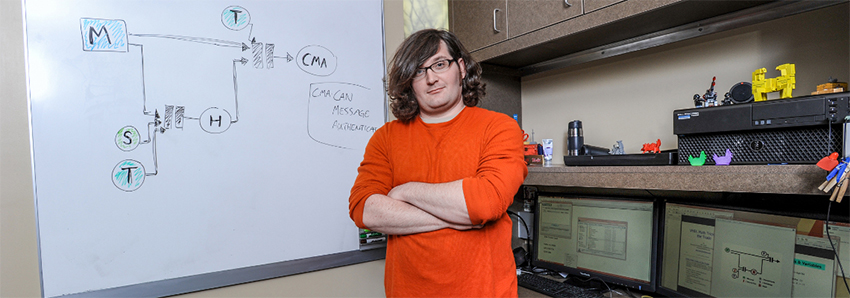Student Research

At the School of Computing, there are many opportunities for both undergraduate and graduate students to engage in research.
Undergraduate
The University provides fellowships that cover a summer stipend and modest supplies for undergraduate students who wish to conduct research with a faculty member over the summer. For more information about this competitive program, please visit the Office of Undergraduate Research.
Students enrolled in the USA Honors program [https://www.southalabama.edu/colleges/honors/] are required to complete, as the culmination of their academic experience at USA, an Honors Senior Project resulting in a thesis. This program requirement is designed to provide the student an opportunity to apply the knowledge base and tools of their discipline in a mentored scholarly exploration suitable to the student's academic interest and background. Most projects will be at least a year in length. In the School of Computing, the required courses are the two-course Senior Project Sequence (CIS 497 and CIS 498).
Undergraduate students can work closely with a faculty member in a research laboratory on a specific project in a Directed Study (CIS 494)
Senior Design (CIS 497) is a capstone project class taken by graduating seniors in Computer Information Systems, Information Technology, and Computer Science within the School of Computing. In addition to other class requirements, students work in teams to complete a semester-long computing project for a project client. The teams will create documentation for their project as well as do a presentation of their results at the end of the semester.
Posters from Senior Designs.
Graduate
Examples of student research in CS
Side-channels are unintended signal paths that can leak critical information. In a cryptographic device, electromagnetic and power side-channels can reveal secret keying material. We are currently developing countermeasures to protect cryptographic implementations using reconfigurable Field Programmable Gate Arrays. We are also doing research into using thermal side-channels within a chip die to detect malicious software due to its change in the processing load and related heat signature.
Action rules are constructs that provide guidance on what actions (i.e. changes to attribute values) should be made to convert a set of objects from an undesirable state to a more desirable state. For example, assume that you are seeking to determine what can be done to reduce the severity of traffic accidents. A potential action rule would state, if you add streetlights to a street with none, a significant number of accidents that result in severe injury would be reduced to accidents classified as minor. Current research includes the development of more efficient and effective algorithms for discovering action rules.
Examples of student research in IS
Objectives include examining the electronic devices used in both training healthcare workers and providing treatment to patients. Identifying security vulnerabilities in medical devices and working with healthcare providers and manufacturers to mitigate risk using various sources and a risk management perspective, we developed a health information security and privacy threat tree. We defined 25 nodes (threats), breaking them down into key risk-related data attributes: threat source and action, the health information asset and its vulnerability, and potential controls. The identified threats related to the disclosure of health information by insiders and outsiders, and the manipulation of health information by vandalism, loss, or corruption of data. The construction of such a threat catalog is argued to be useful for risk assessment and to inform public healthcare policy.


